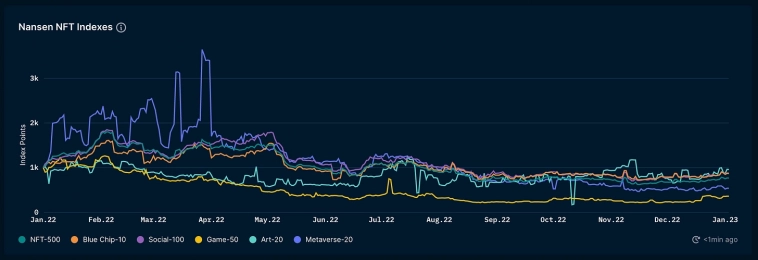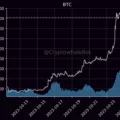Before you dive into the article, pay attention to the fact thatthe fact that none of theis financial advice, please do your own research to make a more informed decision.
Institutional degeneration
Of course, my friends who buy every morning*literally* shieldcoins sitting on a pot are not the only reason digital assets have become a multi-trillion dollar industry. Institutions—or, as I like to call them, over-leveraged degenerates in suits—play a role in this equation. Let's take venture capital as an example. Today in the US, it takes an average of 7 years for a company to reach liquidity, from seed funding to going public. During the dot-com bubble, this took only 3 years.
The emergence of mega funds such as Softbank orTiger Global has changed the trajectory of venture capital as an asset class. Firms were "revalued" into growth stage firms in a much shorter time frame. As long as they could show at least some dynamics. Venture capital firms backing startups that are burning through cash is nothing new in the world of venture capital. But the speed at which this has happened has been much faster in the last 2 years.
When every firm you invest in can raise in 6-8 months, the challenge becomes less about picking winners and more about buying as many lottery tickets as possible.
Large funds, in turn, have incentives toplacement of huge amounts of capital. If a fund operates with a billion dollars, then placing $10 million is only 1% of the entire fund. When excess capital is chasing a limited number of startups, it means valuations are on an upward trend. For context, remember that last cycle OpenSea was valued at $13 billion in private markets. Or MoonPay was valued at $3.4 billion.
If we take comparable SPO indicators forToday: Coinbase is valued at $10 billion. And PayTM, one of India's leading wallet providers, is valued at $3.8 billion. Do Coinbase and PayTM cost less than OpenSea and Moonpay? I don't know. But mental heuristics most likely played a role here. Investing increasingly larger amounts of money at higher valuations would be fine as long as there is a healthy open market to tap into.
Open markets are the benchmark for where toAccording to private investors, a startup may eventually emerge. Let's say I see that a publicly traded firm is valued at $100 and an associated early-stage player is valued at $1. It could be worth 100 times more once it goes public. Naturally, early stage investors make only a few investments. They disperse among the players - or diversify, as the cool kids call it. Let's say you made ten bets of $10 each and one of them reached $100 - you've gotten even with all your bad bets and made a nice profit. (In this hypothetical example, I do not take into account commissions, dilution, and attorney fees).
But the story changes when the estimates are out in the openmarket are consistent with estimates in the private market. Remember at the beginning of the article I talked about how the availability of data helps us evaluate things? Every time a company like WeWork or Beyond Meat goes public, there is a precedent for how much it should be worth. This means that after the company goes public, valuations will return to more realistic figures. Thus, capital allocators are faced with a choice when a company goes public in a declining market.
Should you tie up your capital to an early-stage illiquid venture or buy it outright on the public markets, as Softbank did in Q3 2020?
The saying goes: “Money begets money.”In this case, we should say that liquidity begets liquidity. When public market participants don't see profits, private market players find themselves sitting ducks. Because there is virtually no appetite for risk and investing in early-stage players. There is a direct correlation between the number of IPOs and the amount of capital allocated to early-stage venture deals. Venture investors return money to new startups as soon as they see profits from a company that has gone public. The above graph shows why the last few years have seen rapid growth in venture capital investor activity. An increase in the number of IPOs likely contributed to this.
This also works in the opposite direction.If venture capitalists don't see immediate liquidity opportunities, the proverbial money spigot is shut off. In 2021, Softbank averaged 3 trades every week. This is not entirely an exception, given that their team size at the Vision Foundation is ±400 people. But the sharp increase in the pace of capital deployment becomes clear when you look at Tiger Global's investments over the years, as shown in this chart from Pitchbook.
For comparison, the amount of capital allocatedTiger alone, has grown from about $8 billion in 2019 to about $70 billion in 2021. Similar jumps are observed in the number of completed transactions. So, on the one hand, you had an endless flow of capital, supported by healthy open markets. On the other hand, you have a limited supply of startups that were initially eligible for VC funding. Combine these two factors and you get the startup frenzy that we have seen in the last 2 years. In other words, the party we've seen over the past few years is over. And it may not resume for a long time. For the foreseeable future, everything around us will be ruled by cash flow.
What's happening between organizations and startupsin the digital asset ecosystem? Just as public markets have been kind to founders looking to list their companies and gain liquidity, the digital asset space has become populated with new mechanisms to provide liquidity to active market participants. The hilariously terrible explanation SBF is now giving for DeFi Yield farming in a conversation with Bloomberg's Matt Levin is the epitome of everything that was wrong with the last cycle.
Madness with a tick
What made Web3 unique in its madness wasthis is how retail interest was fueled and the pace at which retail liquidity entered the blockchain ecosystem. Individuals no longer needed to invest in a distant vision of what blockchain could deliver, as was the case in 2017 with ICOs. Instead, one could invest in assets that were here and now. The “yield” from DeFi was perceived as real.
Aspects such as play-to-earn and NFTs couldattracting retail minds in a way that concepts like peer-to-peer Uber or supply chains never could. Combine that with normal receipts and lockdown boredom, and you get NFTs that are selling for billions of dollars. Everyone wanted to grab the next bayaka. Each company wanted its piece of the play-to-earn pie.
Benefit from it as an institutionalinvestor was quite simple. You invest in infrastructure that allows founders to go to market (like Alchemy), or you invest in retail outlets where users trade these assets. Looking through this lens, it's easy to see why so many big names pounced on investing in FTX - they could avoid the directional risks of random altcoins while still benefiting from the hype itself.
Facebook or Amazon have to spend years oncreating network effects that will get people to spend money on their platform. Facebook's massive failure to create anything (really) meaningful in the metaverse is a testament to how difficult it is to get retail users to spend money on something (unless the value proposition is somehow outlandish). Nobody wants to waste their time becoming a cartoon with no legs. On social networks, we are already avatars enough. Contrast this with what we see in the crypto-native “metaverse” variation.

It was common to see NFTs being sold fortens of thousands of dollars. The graph above shows that most of them go to zero over time. For the first time in human history, we had the tools to create a bubble bubble. During the South Sea bubble or "rail bubble" it still took years to create any semblance of a viable business. It took enormous resources to pretend that the business existed under the hype. In the digital age, a single day of coding was all it took to raise capital from investors who often knew nothing about the digital tools they were rushing to buy.
It's unfair to say thatinstitutional investors invested in creating platforms that sold worthless assets to unknowing retail users. Because many of them imitated what their colleagues were doing. Or they were reacting to what their investors (LPs) wanted. But there is reason to believe that inflated performance—whether on TVL locked in DeFi or on tradable NFTs—has been the driving force behind the massive amount of money flowing into the ecosystem over the past 2 years.
This massive influx of capital, in turn,stimulated the rapid financialization of everything. When you focus on the quickest way to get a customer to buy rather than what the customer needs, you end up with a sea of predatory tools that have nothing of value to offer. One sells risk to curious customers looking for novelty. Naturally, this leads to market abuse in the short period when regulators have not yet understood what is happening in the new market.
Was it just a dream?
A few days ago, while walking in Dubai,one friend told me that he is "confident" in his ability to make money no matter where the markets move. He is the CXO of a major blockchain firm and certainly has good reason for his confidence. People like me who entered the market in the 2010s benefited from one of the largest expansions in the money supply. We've only seen good times - with occasional bouts of fear. If you were 20 years old like me, then you had nothing to worry about.
I hinted to him that all technology is likeThe sector may be in a multi-decade bubble cycle, and we may soon face reality, as happened with previous "hot" sectors. There used to be a time when working on cars or electronic products was a smart thing to do.
The more I study bubbles, the more I wonderthe question of whether we were all living in a fantasy. Maybe all crypto is just *dust in the eyes*? Or does what we spend so much time and energy on actually have real prospects? It's nice to believe in the Su Zhu supercycle, but it would be terrible to wake up at 40 and realize that I just spent two decades of my life on technology that means nothing. Life is too short to create something that no one needs.
With this attitude, it is worth looking objectively atwhat direction the sector has developed over the past few years. I would love to talk about how Zk-snarks are a revolution in innovation, or that all sorts of small DAOs that abuse them for airdrops will fix the financial market. But “innovation” is not what I was looking for. I needed traction. Quantitative evidence (that can be verified) that people use these things. Numbers. And hockey stick graphics.
As a growth benchmark for these sectors, Ilooked at the 2020 numbers and compared them with what is happening now. I took this approach because Q1 2020 was the point where most of the things I thought were trending upward were ripe enough to be used, but not yet mainstream. Taking Q4 2022 as the other end of the scale makes sense because we're already 6 months into a bear market, and if all these metrics were just traders clicking furiously on their keyboards, we'd already be seeing a significant drawdown in line with the cue ball crash.
If I take into account that the price of Bitcoin and Ethereum fell byapproximately 75% of their ATX, I expect a similar drawdown for active users. Then I filtered out the most popular use cases, such as stables, DeFi applications and NFTs.





